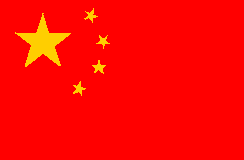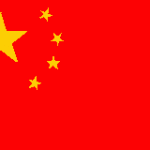Last year, Research and Markets released a report projecting that China’s in vitro diagnostics (IVD) market is likely to triple in size before 2022. This growth is driven by an aging population, a growing middle class, and numerous public health campaigns emphasizing preventative care. Foreign manufacturers who want to access this growing market, however, face an extremely complicated regulatory and reimbursement environment.
The procedure for gaining IVD market access in China is long, convoluted and unpredictable. Companies must navigate a myriad of both national and provincial level regulations before the products can be approved and registered at the national level. Newly approved IVD products are offered to patients for out-of-pocket purchase for at least two years, after which they can enter the reimbursement process.
IVD Product Registration in China
The first step to accessing the Chinese market is to register the product with the China Food and Drug Administration (CFDA), the regulatory agency that governs product registration. China lacks a formal consultation process specifically for IVD products, and since most of its reviewers are engineers, there are few reviewers who have strong IVD expertise.
Most IVD products are regulated in the medical device category, with only a few classified as drugs. As such, they follow the same requirements for registration and review as medical devices. As with medical devices, Class I IVDs do not require registration; all that is needed is to file a notification application with the CFDA. Likewise, the registration process for Class II and III IVDs matches the process for Class II and III medical devices.
Generally, all Class II and III IVDs need to go through local clinical studies in China if they are not on the exempt list. For imported IVDs, testing requirements are the same as for medical devices. The CFDA’s testing centers will follow specification and testing methods in the product technical specification file, as drafted by the foreign company. Class III IVDs must go through a multicenter study with at least three clinical sites. There must be a minimum of 1,000 samples, including positive and negative. The IVD study should be a comparison study, based on the method that is considered the gold standard. If no similar IVD product exists, other kinds of recognized clinical diagnosis criteria, such as CT or MRI results, can be used to meet the comparison standard.
Clinical trial approval is not necessary for an IVD registration clinical trial. However, the ethical committee (EC) of the clinical sites (hospitals) must review the study protocol. After review, the hospital will issue an EC exemption or approval letter. That letter must be submitted as part of the clinical data after the trial is completed, and as part of the product registration filing with the CFDA.
While all Class II and III IVDs have been required to go through local clinical studies in China, China’s State Council recently issued new regulations on October 8, 2017 that should allow some foreign clinical trial data for medical device and IVD registration. Trials must be conducted at multiple centers and meet CFDA registration requirements. These changes should be positive for Western medical device manufacturers, reducing the need for local clinical trials, lowering market entry costs, and cutting the time needed to achieve registration. Avoiding the need for a local clinical trial could reduce the IVD registration timetable by about one year. What remains unclear is which IVD products will be able to use data from foreign clinical trial data.
Reimbursement of IVD Products in China
IVD reimbursement is performed entirely at the provincial level; the national government does not influence the provincial reimbursement process in any way. All Chinese provinces have three bureaus that are independent but interact with one another on reimbursement: a pricing bureau, a health insurance bureau and a bureau of health. Each province has a different code for a given IVD. In setting the price, the role of the pricing bureaus is to check factors such as how essential the test is, how the test is superior to others, reagent costs, equipment depreciation, test costs, and so on. The bureau will also seek feedback from key opinion leaders. The reimbursement processes amongst the provinces are similar, but can result in different reimbursement amounts.
In general, the reimbursement process works as follows. If, for example, a hospital wants to buy a new test from a Chinese distributor that costs $250 per test, the pricing bureau may set a price of $350 per test. When a patient at the hospital takes the test, they would show their insurance card and not have to pay. The hospital would then be reimbursed $350 by the provincial insurance division. The $100 difference is taken by the hospital as profit, although the real profit will be reduced by the hospital’s expenses.
Usually, a new IVD product will be eligible for reimbursement after it has been sold for two years. During that two-year period, the IVD is entirely self-pay. After those two years, it normally takes six months to obtain a new IVD reimbursement rate. Reimbursement may not be difficult if the new IVD’s price is not too high and is superior to an existing IVD that already has a reimbursement price. It may be more difficult to obtain reimbursement if the IVD is high priced. It remains unclear if a clinically better IVD will be accepted at a higher price.
Tenders are generally issued once a year, although this has become less predictable in many provinces. Local distributors are the agents that help manufacturers navigate the bidding process. Provincial regulators will take a minimum of three months to publicly announce bid winners.
If the manufacturer loses a bid, it cannot enter hospitals in that province. The procurement price (purchase price by hospitals) in each province is specified in the accepted bid. If a foreign IVD manufacturer wins the bid but the asking price is too low, the manufacturer may reject the bid and give up the market in that province. It is important to note that winning the provincial bidding process does not guarantee entry into specific hospitals. Manufacturers must also individually pursue listing privileges with each hospital in the province.
As China’s population continues to age and grow wealthier, the demand for high quality, easy to use IVDs will only increase, making it an attractive market for foreign IVD manufacturers. The exceptionally complex and constantly changing regulatory and reimbursement environment means that manufacturers must proceed with caution. They should realistically assess the likelihoods of obtaining registration approval and an advantageous reimbursement rate for their products to ensure their best chances of success.







